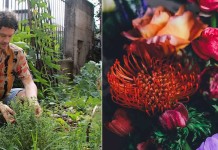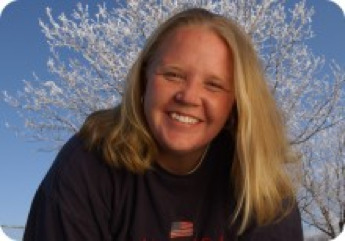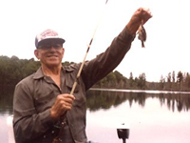He remembers how the people reacted when he came to drill a well for them. “People just mobbed me and cried.”
Willis Miller believes in fate. Near death with a heart attack at age 50, he vowed to spend the rest of his life doing good in the world if he survived.
Now 81, Miller can take satisfaction in the decades of good created through his nonprofit organization, Water for Life. Miller spent all the money he saved as a successful water well driller to provide and maintain hundreds of water wells for the poor in Haiti, many of whom walked over 5 miles for a bucket of dirty water. “If you don’t have clean water,” Miller said, “you don’t have anything.”
Water for Life provides clean water for over 200,000 people a day in Haiti. Clean water not only improves health, but crop production and living conditions as well.
While recovering from his heart attack, Miller met a man one day who asked him what he did for a living. “I told him I was a water well driller, “ Miller said. “This man started telling me about how bad it was in Haiti, how a Haitian mission had a water well that no one could fix.”
For the next seven years Miller gave his time and expertise to large organizations such as World Vision and Compassion International. He remembers how the people reacted when he came to drill a well for them, “People just mobbed me and cried.”
The large organizations didn’t service the wells once they were drilled. “It just didn’t work out,” Miller said. “I drilled over 40 wells for them, but today none of them are working.”
Miller became so frustrated he was ready to return to his home in rural Iowa. But a friend decided he would rent out his farmland and give Miller the money so that he could continue his good works in Haiti. “We started with nothing,” Miller said, “but today Water for Life has a budget of over $600,000 and has more than 300 working wells in Haiti.” Water for Life trains Haitians to service the wells. A single well provides clean water for about 750 people and 250 livestock.
Water for Life also built two irrigation systems, a church and a primary school in Haiti. Before the irrigations systems were put in, Miller said, crops baked in the sun and yielded little edible food. “They used to get a bushel of corn. Now they get a roomful of corn,” Miller said.
Although he retired about 5 years ago, Miller remains involved in the operation of Water for Life from his home in Kalona, Iowa. His son, Leon, now president of Water for Life, spends much of his time in Haiti conducting most of the work, Miller said. “I feel I’ve accomplished what I set out to do,” he said. Seeing the living conditions in Haiti change dramatically has been one of Miller’s greatest rewards.
Miller said, “Mothers would tell me their babies once had worms up to three feet long, but not any more.” Then he smiled, “That just thrilled my soul.”
www.waterforlife.org
 Children in Remote Villages in India Teaching Themselves to use Computers Instinctively – with No Help from Adults
Children in Remote Villages in India Teaching Themselves to use Computers Instinctively – with No Help from Adults






























